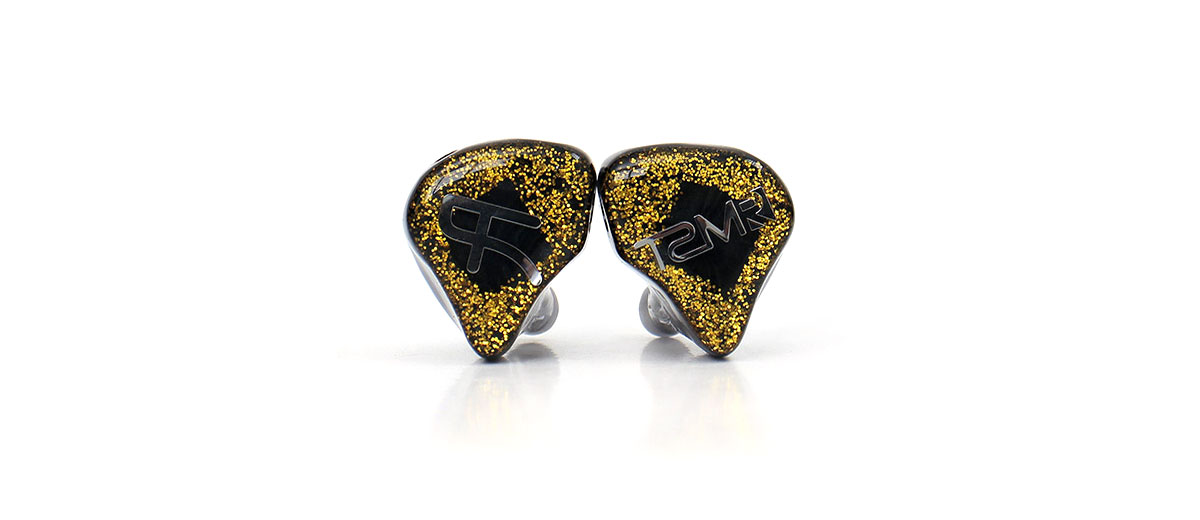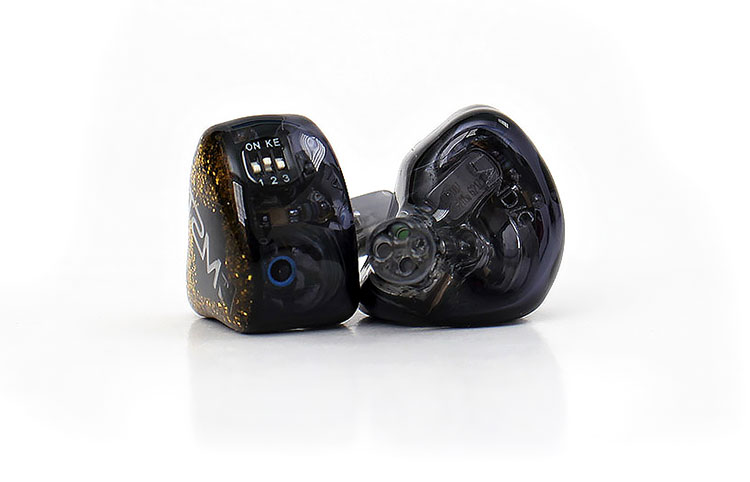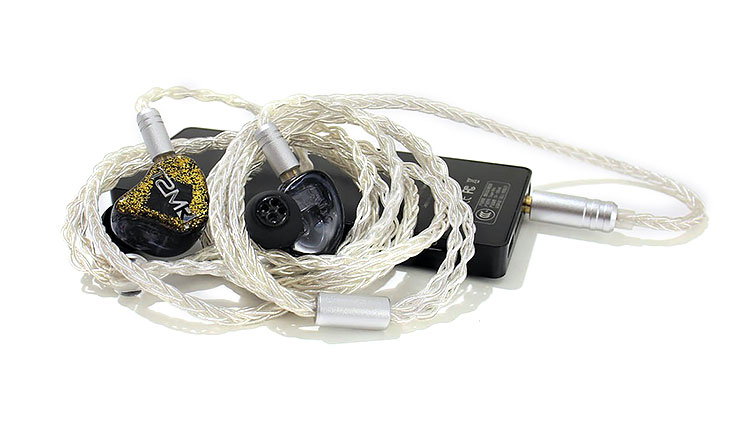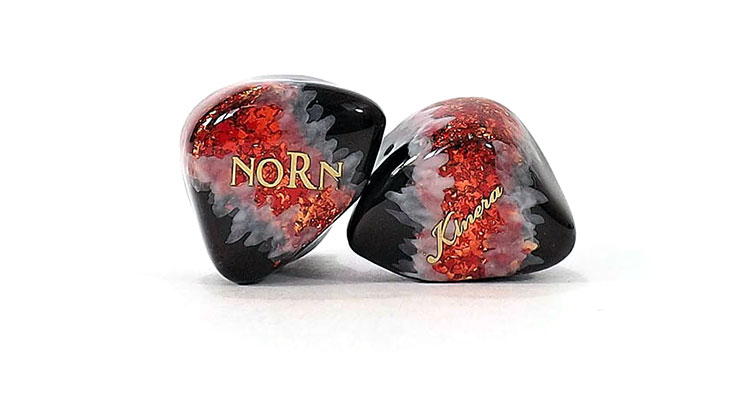Tuning Switches
I wanted to separately mention the different effects I experienced with these dip switches. The manufacturer does claim high efficiency with the switches in the up position but sometimes more is too much and can cause the equivalent of cup overflow.
I personally found the bass response to be too flat or attenuated with the switch down so therefore the bass switch remained in the up position for all my testing since I like warm forward bass. I also switched the middle range switch to the up position because of the added presence. In the end, I settled for a 1, 2, and a 0 setting.
My personal experience with the treble switch was a split because on certain songs I liked the switch in the down position and that was mostly on treble hot recordings. However, on other tracks, I found the switch worked best in the up position because it restored some needed brightness on certain dull recordings.
EST super tweeters sometimes need attenuation in my opinion because they can become overextended and cause to me what I call over oscillation and could also sound rather hot.
Some might like bright signatures but I prefer a warmer one most of the time. The good thing is the switch combinations can satisfy both scenarios and needs.
Synergy
Efficiency
The TANSIO MIRAI Land is a rather efficient IEM with a rating of 15Ω and 110dB input sensitivity so you could power these with a whisper. Of course, that is with the switches in the upper position.
Do not quote me on this but it seems to me that with the switches in the lower position efficiency becomes similar to a set that has an impedance rating at around 24Ω to or up to 50Ω which is still easy to drive but requires a touch more power to make go.
Pairings
Once again I have mixed feelings far as what the Land will pair well with because it all depends on the dip switch positions but the switches can sometimes remedy a bad pairing.
For example, if you use bright amplification, solid-state then by all means keep that treble switch in the bottom position unless you want a blast of treble which some might even enjoy on occasion.
Vice versa, if you want a warmer sound signature they can also adapt easily by engaging the bass switch while keeping the highs attenuated by keeping the switch in the bottom position and just increasing the bass.
You could just opt for warm amplification. For example, even with micro DACs, this same applies as these preferred my Shanling UA2 over let’s say the Helm Audio BOLT which is an excellent dongle DAC but tends to sound brighter compared to the Sabre DAC equipped UA2.
Select Comparisons
DUNU EST 112
$489.99
Technical
Contrasting in design but similar in driver configuration, the DUNU EST 112 sport a couple of EST Sonion super tweeters similar to the Land but in a quad driver configuration consisting of a 13.5mm dynamic, a single BA for midrange and dual EST high-frequency drivers.
The EST 112 is the only model that uses MMCX connectors and uses my favorite setup far as connectivity with a high-quality cable assembly that has a swappable tip system and you get 3.5mm, 2.4mm, and 4.4mm connectivity out the box plus a 6.35mm adapter.
Design
Unlike the rest of IEMs in this comparison, the EST 112 have shells made from a metal 2 piece system and are probably the heftiest in design and weight but still remain rather comfortable to wear.
I like the EST112 packaging and presentation the most of the pack not only because of the swappable tips with four types of plugs but the inclusion of tips, storage case, and just the overall package of the accessories and unboxing experience.
Performance
The EST 112 is a rather midrange forward IEM but on paper, one would assume that these are either treble forward or bass-heavy since they have a rather large 13.5mm dynamic driver for bass, two EST tweeters but only one BA midrange driver.
Clarity and definition are very good but the midrange takes the front stage. the bass response in my opinion is rather linear and needs some boosting if you want a signature that is not too sterile or with some nuanced warmth.
These IEMs are at the bottom when it comes to external sound isolation with an average of 22dB or less of external noise reduction. The TANSIO MIRAI Land is rated at 26dB
The soundstage is not as wide as on the Land but seems deeper but remains somewhat closer to the listener which is preferred for intimacy and when you want that nightclub sensation of precise positioning.
Aya Audio Siren
$590.00
Technical
The Aya Audio Siren is similar to the Land due to the dual Sonion EST drivers. However, the similarity ends there as the Sirens are a treble first presentation and it relies more on Balanced Armatures for the rest of the spectrum and excludes the dynamic driver in its arsenal of drivers.
The Aya Audio Siren shares many similarities with the Land such as a 2-pin 0.78mm connector but I honestly prefer the recessed port design of the Siren which strengthens the connection, unlike the flush mount connector which hangs on by the strength of the pins themselves.
Design
The Siren shells are made from black resin with a stabilized wood faceplate and an aluminum output tube. They are light and comfortable and could be worn for hours.
The packaging and included accessories list for the Siren is lackluster in this price range and Aya does not include a lot of accessories coming in a plain black box with the Aya Audio logo in gold-tone.
You get a few sets of rubber tips, the wire, a silver authenticity card and it all comes with a pelican case which is too large to be used as a carrying case but you do get a small cloth carrying bag. However, the bag is too small to carry the IEMs plus the wire.
Performance
The Siren uses what they call a filter-less design. In other words, those drivers are directly coupled to the amplifier, use natural crossover points and there is nothing in between you and those drivers so hold on to your hat.
The treble response is borderline hot but remains very sharp and bombards the listener with high-frequency detail. The midrange is detailed and forwardly presented while the bass response remains neutral, clean, fast, and deep long as you use the correct tips. The Siren’s are the most finicky with tip selection of this 4 IEM shootout.
The Sirens have a good 3-dimensional ability that can place sound anywhere in the panorama but remains medium-sized and realistic foremost. Isolation remains below the Land but still hits a middle point in this aspect.
Kinera Imperial Norn
$509.00
Technical
The Kinera Imperial Norn is similarly priced and similarly constructed IEM absent the Land’s EST tweeters and a few other tidbits.
The Driver configuration is the more usual single dynamic driver plus four Balanced Armature drivers in a 2 midrange BA plus 2 for treble setup. There are no tuning dip switches or sound tuning capabilities on the Norn or on any of the other IEMs in this comparison.
Design
Artistically and visually these are probably the best-looking pair of IEMs in this comparison. I really like the dominant black and red color scheme and seamless construction of these hand-assembled shells.
The stock cable is a nice one indeed and is terminated in a 2.5mm TRRS balanced connector and Kinera includes a set of extensions that convert the 2.5mm balanced into either a 4.4mm balanced or into the more common 3.5mm TRS.
While that is fine it lacks the innovation of the system used in, for example, the DUNU EST112 which uses swappable tips that keep a stock look and still go either single-ended or balanced.
Performance
If you are looking for a smoother experience perhaps the Norn fits the bill best by not being as treble forward as the other IEMs in this comparison.
However, some high-frequency detail gets lost on the Norn if you directly compare them all because although the high frequencies of the Kinera Norn are present, they still lack some definition, and distinction plus are not as forward sounding making this IEM a touch warmer in signature.
Bass and midrange response are both very similar since they share a common configuration consisting of a single dynamic driver along with two BA drivers for the midrange. Most of the sound signature difference is within the high frequencies.
Soundstage and imaging are also similar but the TANSIO MIRAI Land has the edge for the simple fact that the high frequencies do 3D positioning better and seem to have a wider, taller, and deeper range of projection.
Our Verdict
I would have considered the TANSO MIRAI Land common amongst similarly priced models but the tuning dip switches sort of pushes them past the common line and I must admit that the tuning of the individual switches was well thought out and offer versatility far as sound signatures.
One aspect that was a small infraction was the lone 3.5mm connectivity and lack of tips, but again I need to remind you about those switches. I think no awards will be won from the rest of the Land’s included accessories and packaging but boy those switches.
What are you getting here with the Land? Good sound quality, lots of micro details but most of all versatility by having the ability to be a warm sounding IEM which can also play the part of bright sounding or midrange forward. Or perhaps you like a “pedal to the metal” sound signature, well then just flip those switches.
The individual tuning of each dip switch was done just right which gives the Land multiple personalities for the buyer who is unsure of what particular sound signature to look for, or perhaps wants the versatility of an all-in-one IEM that has Chameleon-like abilities.
TANSIO MIRAI Land Technical Specifications
- Driver 2EST + 3BA + 1 Dynamic driver
- Impedance 15Ω@1kHz
- Input sensitivity 110dBL/mW
- Passive noise reduction 26dB
- Frequency response range 10-70KHz
- Connector 2Pin 0.78mm
- Plug 5mm







